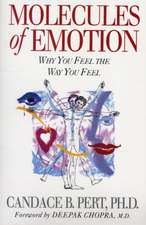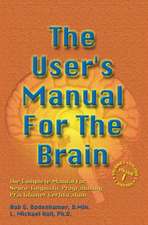On the Edge of Darkness: America's Most Celebrated Actors, Journalists and Politicians Chronicle Their Most Arduous Journey
Autor Kathy Cronkite, Cronkite, K. Cronkiteen Limba Engleză Paperback – 30 iun 1995
--Mike Wallace
"Toward the end I couldn't get up. I just physically couldn't."
--Kitty Dukakis
They have made the impossible climb into the spotlight and attained their brightest dreams. But for Mike Wallace, Kitty Dukakis, William Styron, Joan Rivers, and countless other people struggling against the debilitating effects of depression, life's most challenging battle is waged not in the public eye, but in the darkest recesses of the mind. In her brilliant new work, Kathy Cronkite gives voice to dozens of celebrated professionals who have endured--and conquered--the hopelessness of chronic depression. Most of all, this courageous book brings a ray of hope to the 24 million Americans who live in the shadows of this misunderstood disease, yet bravely seek a path toward the light. You will learn:
What to do when the sadness won't go away.
Why women are most vulnerable to unipolar disorder.
How substance abuse can mask the symptoms of depression.
The latest therapeutic options for children who are affected by their own--or a parent's--illness.
Which effective new treatments can lift the burden of depression--for up to 90 percent of people who suffer from it!
Preț: 120.78 lei
Nou
Puncte Express: 181
Preț estimativ în valută:
23.11€ • 23.99$ • 19.27£
23.11€ • 23.99$ • 19.27£
Carte disponibilă
Livrare economică 01-15 martie
Preluare comenzi: 021 569.72.76
Specificații
ISBN-13: 9780385314268
ISBN-10: 0385314264
Pagini: 368
Dimensiuni: 159 x 238 x 19 mm
Greutate: 0.43 kg
Editura: DELTA
ISBN-10: 0385314264
Pagini: 368
Dimensiuni: 159 x 238 x 19 mm
Greutate: 0.43 kg
Editura: DELTA
Recenzii
"Important...Kathy Cronkite's passionate, informative book manages to dispel the myths surrounding depression without ever seeming didactic."
--Los Angeles Times
"Riveting...[an] uplifting, strongly researched but accessible book."
--Kirkus Reviews
"Cronkite has embarked on a worthy mission, and for some her book may be the first step toward recovery."
--People
--Los Angeles Times
"Riveting...[an] uplifting, strongly researched but accessible book."
--Kirkus Reviews
"Cronkite has embarked on a worthy mission, and for some her book may be the first step toward recovery."
--People
Extras
The Dog and I
For Sir Winston Churchill, depression was a "black dog" that tormented him throughout his life. His wife said that after the failure of the Dardanelles Expedition in 1915, he "was filled with such a black depression that I felt he would never recover."
I didn't need a failure as large as the Dardanelles Expedition. For me, tenth grade was bad enough.
I didn't know about the dog back then, but he was there, crouching in the shadows. I missed classes because I would break down crying on the back stairs and be unable to stop. I cut myself with razor blades, not in an attempt to die, but in an effort to release some of the emotional pain by focusing it in physical pain. I withdrew from my friends. I took drugs in an effort to feel okay at least some of the time. I felt like a failure. Yet, here is what was written in my yearbook:
It's always such a joy to see your smiling face in the halls . . .
Though I don't know you very well, I'd love to have a cheerful friend like you . . .
We sure had fun this year, didn't we?
My pain was mine alone; my mask of normalcy, almost seamless.
And although I have only dim recollections of my earlier childhood, I wonder if the dog was there even then. My report card always seemed to read "She does fine work when she applies herself." "A grade A student when she wants to be." Was I in fact a lazy, self-indulgent pupil? Or was I even then only periodically capable of doing the work, at other times fighting internal demons?
I see snapshots from my later life with depression: As a college student, putting a DO NOT DISTURB sign on my dorm room door and not emerging for days at a time; as a young woman, struggling to establish a life on my own, a thousand miles from home, lying on the floor all night thinking that the pain I felt was mere loneliness, thinking that if I could just hang on till sunrise, I'd be okay; as a professional, slogging through what felt like waist-deep mud each morning to make it to the office, to give everything I had just to get the job done; and most recently, as a wife and mother, with children to be nurtured, plumbing to be repaired, errands to be run, and a marriage to be salvaged amid the desperation of emotional illness. Most of my life I fought the anger, the pain, the hopelessness, the irrationality, the hyper-emotionalism, and the apathy that drove off lovers, ruined my self-esteem, and brought me to the brink of suicide more than a few times. I didn't know it had a name; I didn't know it could be stopped.
In actuality, depression is one of the disorders most successfully treated by psychiatrists, but if you call it what it is, a mental illness, you conjure up images of Bedlam, of maniacs running uncontrolled or lunatics gibbering on the sidewalk. Despite Newsweek cover stories, many people don't know that the pain in which they live may be an easily treatable condition. It does not mean that you, or your afflicted loved one, is evil or weak, or lazy, or nuts. Full-blown clinical depression is a real disease, like diabetes or heart disease. It is not under the control of the person who has it and not amenable to a do-it-yourself approach, but professional help is available and can change your life. Many successful, competent men and women have succeeded in life in spite of debilitating depression.
It can happen to anyone, at any time, and it takes many forms. It may be a lifelong problem or a transitory response to a particular crisis. Some people experience only one episode in a lifetime; others live through it many times, or continuously; while others sweep from exhilarating highs to debilitating lows.
The costs of depression are great: Estimates range from $16 billion to $45 billion a year nationally in direct services and lost productivity. But the most painful costs can't be quantified--lost relationships, lost self-esteem, lost lives. Depression cuts across all social and economic strata. Though rates are highest for those between twenty-five and forty-four years of age, neither the very old nor the very young are exempt. During any six-month period, about 3.5 percent of men in the United States and almost twice as many women that we know of will experience depressive illness. That's 24 million people.
We have an idea of how many people have it, but we may not know if our best friend does. Like alcoholism ten years ago, or cancer a decade before that, no one talks about it. We are ashamed.
What causes this disorder? Is it an illness, a weakness, a syndrome? Causes are still being researched, and there appear to be several. Genetics may predispose an individual to depression, which may then be triggered by an event such as a death or other loss or trauma, by physical illness, hormonal imbalance, certain medications, or even developed personality traits.
Like the causes, the "cures" are various and not well understood. The prescription for conquering depression is not cut and dried. All too often, sufferers are told to "pull themselves up by their bootstraps," an admonishment rarely given to other medical patients. "Take a walk; do something for others; get up and get going," exclaim so many of the articles in popular magazines. It may be excellent advice for the blues or even a mild depression, but it is frustrating and painful for those with more serious illnesses. Such advice serves only to increase self-blame as the depressed person "fails" to heal him- or herself. "Big D" depression, the real thing, the involuntary chemical imbalance, can't be walked away, or overcome with good thoughts, or treated with self-help manuals.
Nor is medication the only answer. Prozac, a relatively new antidepressant, received considerable attention in the media--first, as a powerful new medicine, later as a dangerous, violence-inducing drug (these later studies claiming that Prozac induced violent behavior have been discredited)--demonstrating that although various medications can be a miracle for many, they are no solution at all for others. Some people can't tolerate the side effects of certain antidepressants. Pregnant women and nursing mothers should refrain when possible from taking drugs. So how do sufferers cope without pharmacological intervention? What techniques have they developed to help them make it through the day? What tactics have they found just to survive from moment to moment until the black dog departs? And what if it doesn't?
It's not always easy to take the first step back to health. First, we need to know that there is a problem, that not everyone lives in this black pit that seems normal to us. Second, we must overcome the inertia of melancholia, the apathy and hopelessness that is part of the disease and that keeps us from seeking help. Third, we must overcome our own internal fears of being "crazy" and of the stigma of mental illness ruining our careers, our friendships, and our entire lives.
Once we seek help, we still have to hope a correct diagnosis is made and a correct treatment prescribed. For some of us, the next hurdle is overcoming the fear of the treatment itself, which is often just a fear of the unknown.
I remember so vividly leaning against the kitchen counter staring at the prescription I'd been given, in an agony of indecision, scared even to get it filled. On the one hand, I was hopeful that maybe this would be the answer, maybe now the pain would stop; on the other, it seemed too simple, and I was fearful of being medicated. What would it do to me? How would I feel? Would it slow me down? Make me feel groggy or stupid? Would it dull my senses, or my imagination? Would I still be me? My dear husband Bill gave me a hug and said, "Hey, if you don't like the way it feels, we'll find another solution."
For many, the word "normal" connotes "boring, ordinary." But you can't imagine how wonderful "normal" is to someone who hasn't experienced it before. When I drop a glass and it shatters on the kitchen floor, I say "Ooops!" or maybe even "Shit!" but I don't collapse on the tile in tears moaning "Oh, god, I'm so stupid! I can't do anything right!" And I don't have to schedule every moment of the day in fear that if I stop moving, I won't be able to get back up again.
Often, in the early stages of depression, I would pile more work, more projects, more commitments and activities on my schedule, afraid that if I sat down to catch my breath, inertia--that is, depression--would overcome me. I read later and later into the night, knowing that when I finally turned the light off, sleep would not come. Sometimes I'd pace the house in the dark or stare at late-night television, or simply wrap myself in a blanket on the couch. T saw the world through dark-tinted glasses--my house was a wreck, my children monsters, my marriage in trouble, my body fat, my wardrobe ugly, my work without merit, and on and on. "I can't stand this, I can't stand feeling this way," I thought a million times, but I would have been unable to define what "this way" was. I labeled myself "irritable," "cranky," "bitchy," but the feeling was "out of control."
And I took drugs. "Self-medicated" is the trendy euphemism. I took uppers, mostly, to counteract the lethargy. Someone once said a depressed person on uppers approaches the energy level of normal people. I would make myself stay up round the clock for days. Then, when I did sleep, I was able to sleep hard.
There were other symptoms that I never imagined were connected to the depression until the depression was gone and, magically, so were they--the bad dreams, the morbid fantasies and "daymares" that I thought everyone had. Images would haunt me of dismemberments, fiery death, Armageddon. What-ifs spun through my head: What if my husband were killed in a car crash? What if the freeway collapsed beneath my child's school bus? The entire scenario would play itself out, in all its grim detail.
I started seeing a therapist when I was seventeen. He was the first of a dozen. Each was helpful, in his or her way; each assisted me through trying times, helped me toward greater self-knowledge, and in many cases offered true friendship. But of the twelve, eleven failed to diagnose or treat my disease. When I was prospering financially, I saw doctors and shrinks from New York's Upper East Side to Beverly Hills, but the man who put me on the path to wellness was a pastoral care counselor who charged on a sliding scale. For the relative pittance of ten dollars a session, he saved my life. It was he who noticed the pattern of my behavior and suggested I might want to be evaluated for depression by a psychiatrist. A few weeks later I had a prescription in my hand and was about to discover what "normal" felt like.
When my depression first was diagnosed, I felt both relief and shame--relief that my condition was real, had a name, and possibly a cure; shame that I was afflicted with a mental disorder. I still felt I should have been able to rise above it, to use my will to overcome it on my own, and that my inability to do so was proof of my weak nature. I kept the diagnosis and my condition a secret from all but my husband and family, at first.
In the spring of 1990, U.S. News & World Report featured a cover story on depression. I was stunned to read a sidebar interview with Mike Wallace describing his bout with it. I was overwhelmed by his courage, and it empowered me to admit that depression has been a part of my life. It was as though the windows were thrown open on the first bright, clear, spring day, to know that someone whom I respected and admired, who has achieved so much in his profession, who had so much more to lose through his candor than I, was able to talk about his problem without shame and to seek the help he needed without fear. For me, it was the start of a journey of discovery and acceptance, a journey that advanced through the writing of this book and that continues today.
You may feel that your life has little in common with the perceived glamour of Joan Rivers's or Rod Steiger's. You may be right. But depression is a great equalizer--the pain is the same, the floor is just as hard when you fall, and whether your window overlooks Malibu beach or a brick wall, all you see is gray. My family, and those of the celebrities in this book, may have had all the resources you can imagine--financial, social, educational--yet I lay on the bed week after week unable to call for help. Too often, when we did reach out, our calls still went unanswered. Nowhere is it more true that money can't buy happiness than when you're standing on the edge of a cliff and down is the only conceivable direction.
This book will look at what depression is and what it is not; what it feels like, how it is treated and mistreated, and what it means to the individuals suffering from it, to their families, to professionals, and to you and me. The main focus is on moderate, unipolar major depression, not on the small percentage of the severely ill, the chronically hospitalized, the psychotic, or on those whose depression is amenable to self-help therapy, such as exercise or meditation. It is not intended to be comprehensive, but will answer some of the questions you may have. This book is not so much a "how-to" as a "how it is," less a book about causes than effects.
In part, this is a book about courage--the courage that it takes to get out of bed when nothing in life seems worthwhile, the courage to seek treatment when you may not even know what that entails, the courage to speak out publicly when it could mean the end of all you've built in your life.
Most of all, this is a book about hope. If your spouse reaches the end of his or her patience, if you feel intolerably alone even when surrounded by friends, if you look down into the injured faces of your children and feel only rage, or if your treatment fails and you have to start over, you may feel frustrated and discouraged. But even if you don't believe, have faith. There is help, there is hope.
Hope starts with a spark of recognition that what you are struggling with has a name, depression. It is fanned with stories of people who have found ways to heal themselves and it bursts into flame with the realization that a great breadth of healing options exists and that, with perseverance, even the darkest corners of despair will be illuminated.
For Sir Winston Churchill, depression was a "black dog" that tormented him throughout his life. His wife said that after the failure of the Dardanelles Expedition in 1915, he "was filled with such a black depression that I felt he would never recover."
I didn't need a failure as large as the Dardanelles Expedition. For me, tenth grade was bad enough.
I didn't know about the dog back then, but he was there, crouching in the shadows. I missed classes because I would break down crying on the back stairs and be unable to stop. I cut myself with razor blades, not in an attempt to die, but in an effort to release some of the emotional pain by focusing it in physical pain. I withdrew from my friends. I took drugs in an effort to feel okay at least some of the time. I felt like a failure. Yet, here is what was written in my yearbook:
It's always such a joy to see your smiling face in the halls . . .
Though I don't know you very well, I'd love to have a cheerful friend like you . . .
We sure had fun this year, didn't we?
My pain was mine alone; my mask of normalcy, almost seamless.
And although I have only dim recollections of my earlier childhood, I wonder if the dog was there even then. My report card always seemed to read "She does fine work when she applies herself." "A grade A student when she wants to be." Was I in fact a lazy, self-indulgent pupil? Or was I even then only periodically capable of doing the work, at other times fighting internal demons?
I see snapshots from my later life with depression: As a college student, putting a DO NOT DISTURB sign on my dorm room door and not emerging for days at a time; as a young woman, struggling to establish a life on my own, a thousand miles from home, lying on the floor all night thinking that the pain I felt was mere loneliness, thinking that if I could just hang on till sunrise, I'd be okay; as a professional, slogging through what felt like waist-deep mud each morning to make it to the office, to give everything I had just to get the job done; and most recently, as a wife and mother, with children to be nurtured, plumbing to be repaired, errands to be run, and a marriage to be salvaged amid the desperation of emotional illness. Most of my life I fought the anger, the pain, the hopelessness, the irrationality, the hyper-emotionalism, and the apathy that drove off lovers, ruined my self-esteem, and brought me to the brink of suicide more than a few times. I didn't know it had a name; I didn't know it could be stopped.
In actuality, depression is one of the disorders most successfully treated by psychiatrists, but if you call it what it is, a mental illness, you conjure up images of Bedlam, of maniacs running uncontrolled or lunatics gibbering on the sidewalk. Despite Newsweek cover stories, many people don't know that the pain in which they live may be an easily treatable condition. It does not mean that you, or your afflicted loved one, is evil or weak, or lazy, or nuts. Full-blown clinical depression is a real disease, like diabetes or heart disease. It is not under the control of the person who has it and not amenable to a do-it-yourself approach, but professional help is available and can change your life. Many successful, competent men and women have succeeded in life in spite of debilitating depression.
It can happen to anyone, at any time, and it takes many forms. It may be a lifelong problem or a transitory response to a particular crisis. Some people experience only one episode in a lifetime; others live through it many times, or continuously; while others sweep from exhilarating highs to debilitating lows.
The costs of depression are great: Estimates range from $16 billion to $45 billion a year nationally in direct services and lost productivity. But the most painful costs can't be quantified--lost relationships, lost self-esteem, lost lives. Depression cuts across all social and economic strata. Though rates are highest for those between twenty-five and forty-four years of age, neither the very old nor the very young are exempt. During any six-month period, about 3.5 percent of men in the United States and almost twice as many women that we know of will experience depressive illness. That's 24 million people.
We have an idea of how many people have it, but we may not know if our best friend does. Like alcoholism ten years ago, or cancer a decade before that, no one talks about it. We are ashamed.
What causes this disorder? Is it an illness, a weakness, a syndrome? Causes are still being researched, and there appear to be several. Genetics may predispose an individual to depression, which may then be triggered by an event such as a death or other loss or trauma, by physical illness, hormonal imbalance, certain medications, or even developed personality traits.
Like the causes, the "cures" are various and not well understood. The prescription for conquering depression is not cut and dried. All too often, sufferers are told to "pull themselves up by their bootstraps," an admonishment rarely given to other medical patients. "Take a walk; do something for others; get up and get going," exclaim so many of the articles in popular magazines. It may be excellent advice for the blues or even a mild depression, but it is frustrating and painful for those with more serious illnesses. Such advice serves only to increase self-blame as the depressed person "fails" to heal him- or herself. "Big D" depression, the real thing, the involuntary chemical imbalance, can't be walked away, or overcome with good thoughts, or treated with self-help manuals.
Nor is medication the only answer. Prozac, a relatively new antidepressant, received considerable attention in the media--first, as a powerful new medicine, later as a dangerous, violence-inducing drug (these later studies claiming that Prozac induced violent behavior have been discredited)--demonstrating that although various medications can be a miracle for many, they are no solution at all for others. Some people can't tolerate the side effects of certain antidepressants. Pregnant women and nursing mothers should refrain when possible from taking drugs. So how do sufferers cope without pharmacological intervention? What techniques have they developed to help them make it through the day? What tactics have they found just to survive from moment to moment until the black dog departs? And what if it doesn't?
It's not always easy to take the first step back to health. First, we need to know that there is a problem, that not everyone lives in this black pit that seems normal to us. Second, we must overcome the inertia of melancholia, the apathy and hopelessness that is part of the disease and that keeps us from seeking help. Third, we must overcome our own internal fears of being "crazy" and of the stigma of mental illness ruining our careers, our friendships, and our entire lives.
Once we seek help, we still have to hope a correct diagnosis is made and a correct treatment prescribed. For some of us, the next hurdle is overcoming the fear of the treatment itself, which is often just a fear of the unknown.
I remember so vividly leaning against the kitchen counter staring at the prescription I'd been given, in an agony of indecision, scared even to get it filled. On the one hand, I was hopeful that maybe this would be the answer, maybe now the pain would stop; on the other, it seemed too simple, and I was fearful of being medicated. What would it do to me? How would I feel? Would it slow me down? Make me feel groggy or stupid? Would it dull my senses, or my imagination? Would I still be me? My dear husband Bill gave me a hug and said, "Hey, if you don't like the way it feels, we'll find another solution."
For many, the word "normal" connotes "boring, ordinary." But you can't imagine how wonderful "normal" is to someone who hasn't experienced it before. When I drop a glass and it shatters on the kitchen floor, I say "Ooops!" or maybe even "Shit!" but I don't collapse on the tile in tears moaning "Oh, god, I'm so stupid! I can't do anything right!" And I don't have to schedule every moment of the day in fear that if I stop moving, I won't be able to get back up again.
Often, in the early stages of depression, I would pile more work, more projects, more commitments and activities on my schedule, afraid that if I sat down to catch my breath, inertia--that is, depression--would overcome me. I read later and later into the night, knowing that when I finally turned the light off, sleep would not come. Sometimes I'd pace the house in the dark or stare at late-night television, or simply wrap myself in a blanket on the couch. T saw the world through dark-tinted glasses--my house was a wreck, my children monsters, my marriage in trouble, my body fat, my wardrobe ugly, my work without merit, and on and on. "I can't stand this, I can't stand feeling this way," I thought a million times, but I would have been unable to define what "this way" was. I labeled myself "irritable," "cranky," "bitchy," but the feeling was "out of control."
And I took drugs. "Self-medicated" is the trendy euphemism. I took uppers, mostly, to counteract the lethargy. Someone once said a depressed person on uppers approaches the energy level of normal people. I would make myself stay up round the clock for days. Then, when I did sleep, I was able to sleep hard.
There were other symptoms that I never imagined were connected to the depression until the depression was gone and, magically, so were they--the bad dreams, the morbid fantasies and "daymares" that I thought everyone had. Images would haunt me of dismemberments, fiery death, Armageddon. What-ifs spun through my head: What if my husband were killed in a car crash? What if the freeway collapsed beneath my child's school bus? The entire scenario would play itself out, in all its grim detail.
I started seeing a therapist when I was seventeen. He was the first of a dozen. Each was helpful, in his or her way; each assisted me through trying times, helped me toward greater self-knowledge, and in many cases offered true friendship. But of the twelve, eleven failed to diagnose or treat my disease. When I was prospering financially, I saw doctors and shrinks from New York's Upper East Side to Beverly Hills, but the man who put me on the path to wellness was a pastoral care counselor who charged on a sliding scale. For the relative pittance of ten dollars a session, he saved my life. It was he who noticed the pattern of my behavior and suggested I might want to be evaluated for depression by a psychiatrist. A few weeks later I had a prescription in my hand and was about to discover what "normal" felt like.
When my depression first was diagnosed, I felt both relief and shame--relief that my condition was real, had a name, and possibly a cure; shame that I was afflicted with a mental disorder. I still felt I should have been able to rise above it, to use my will to overcome it on my own, and that my inability to do so was proof of my weak nature. I kept the diagnosis and my condition a secret from all but my husband and family, at first.
In the spring of 1990, U.S. News & World Report featured a cover story on depression. I was stunned to read a sidebar interview with Mike Wallace describing his bout with it. I was overwhelmed by his courage, and it empowered me to admit that depression has been a part of my life. It was as though the windows were thrown open on the first bright, clear, spring day, to know that someone whom I respected and admired, who has achieved so much in his profession, who had so much more to lose through his candor than I, was able to talk about his problem without shame and to seek the help he needed without fear. For me, it was the start of a journey of discovery and acceptance, a journey that advanced through the writing of this book and that continues today.
You may feel that your life has little in common with the perceived glamour of Joan Rivers's or Rod Steiger's. You may be right. But depression is a great equalizer--the pain is the same, the floor is just as hard when you fall, and whether your window overlooks Malibu beach or a brick wall, all you see is gray. My family, and those of the celebrities in this book, may have had all the resources you can imagine--financial, social, educational--yet I lay on the bed week after week unable to call for help. Too often, when we did reach out, our calls still went unanswered. Nowhere is it more true that money can't buy happiness than when you're standing on the edge of a cliff and down is the only conceivable direction.
This book will look at what depression is and what it is not; what it feels like, how it is treated and mistreated, and what it means to the individuals suffering from it, to their families, to professionals, and to you and me. The main focus is on moderate, unipolar major depression, not on the small percentage of the severely ill, the chronically hospitalized, the psychotic, or on those whose depression is amenable to self-help therapy, such as exercise or meditation. It is not intended to be comprehensive, but will answer some of the questions you may have. This book is not so much a "how-to" as a "how it is," less a book about causes than effects.
In part, this is a book about courage--the courage that it takes to get out of bed when nothing in life seems worthwhile, the courage to seek treatment when you may not even know what that entails, the courage to speak out publicly when it could mean the end of all you've built in your life.
Most of all, this is a book about hope. If your spouse reaches the end of his or her patience, if you feel intolerably alone even when surrounded by friends, if you look down into the injured faces of your children and feel only rage, or if your treatment fails and you have to start over, you may feel frustrated and discouraged. But even if you don't believe, have faith. There is help, there is hope.
Hope starts with a spark of recognition that what you are struggling with has a name, depression. It is fanned with stories of people who have found ways to heal themselves and it bursts into flame with the realization that a great breadth of healing options exists and that, with perseverance, even the darkest corners of despair will be illuminated.
Descriere
This bestselling compilation of interviews with dozens of celebrities who have conquered depression--including Joan Rivers, Kitty Dukakis, Mike Wallace, Rod Steiger, and Jules Feiffer--takes a major step toward eradicating the stigma attached to the disease, and "manages to dispel the myths surrounding depression without ever seeming didactic" (Los Angeles Times).
Notă biografică
Kathy Cronkite

















